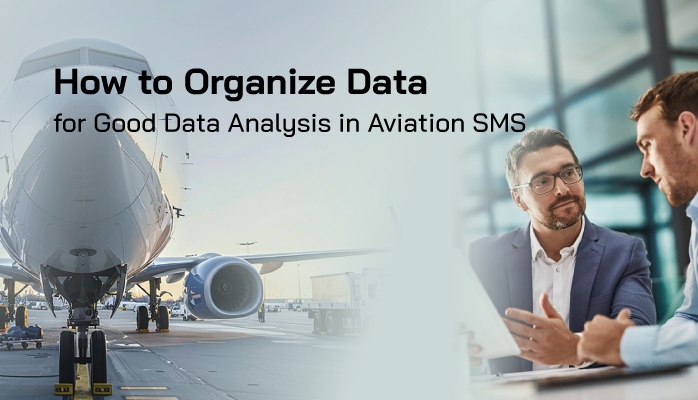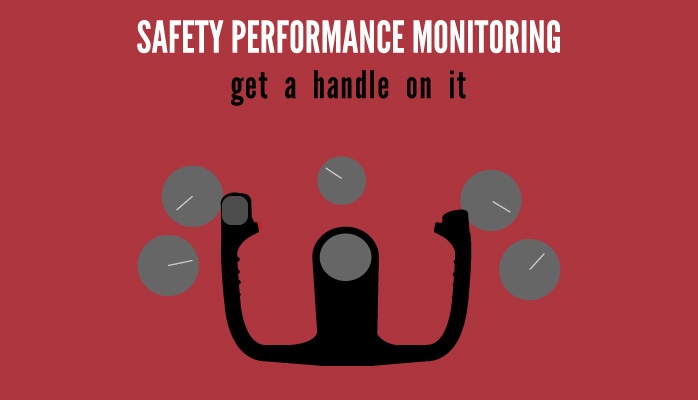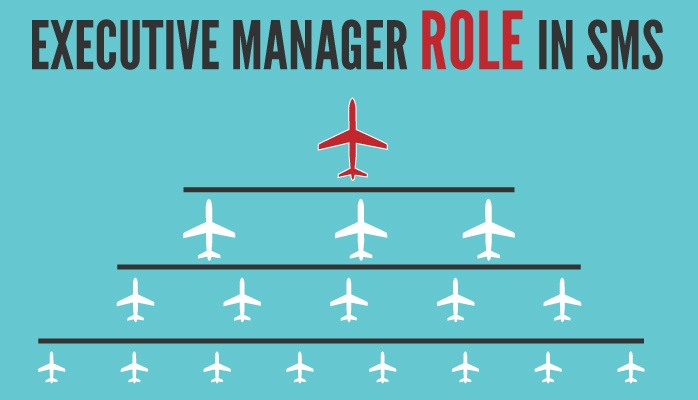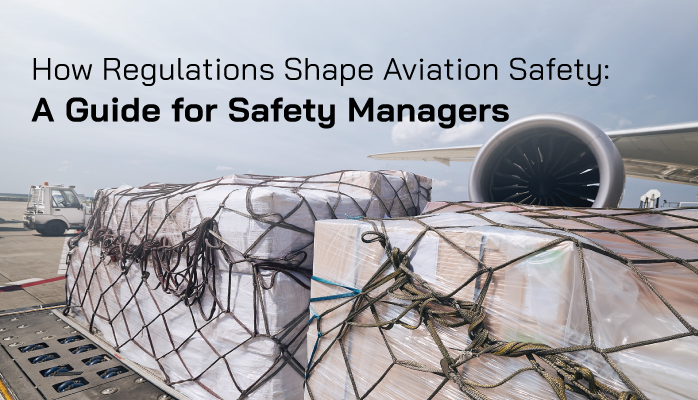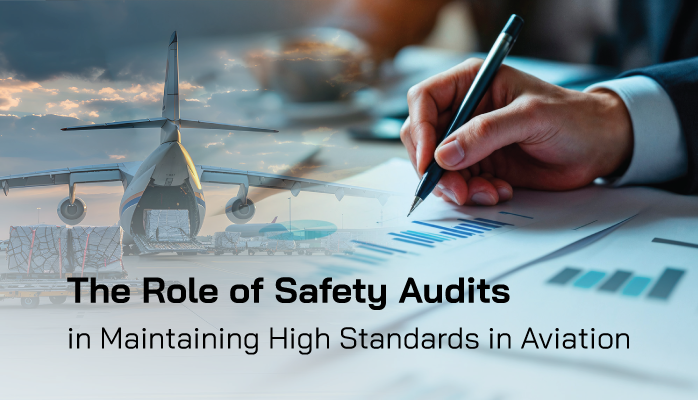In the fast-paced, data-intensive world of aviation, safety is non-negotiable. For aviation safety managers and accountable executives, implementing an effective Safety Management System (SMS) is critical to ensuring operational safety and regulatory compliance. However, one of the biggest challenges new safety managers face is analyzing SMS data to make informed, data-driven decisions.
Without a clear starting point, the wealth of data can feel overwhelming.
Read More
Topics:
Key Performance Indicators,
Aviation SMS Database,
3-Safety Assurance,
Risk Management Software,
2-Safety Risk Management,
Risk Management Training,
FAA Compliance
Monitoring Safety Performance in Aviation SMS Manuals
Monitoring safety performance is a critical component of an aviation Safety Management System (SMS) manual, as outlined in TOC 4.1–4.3. It ensures that safety goals are met, risks are managed, and compliance is maintained with International Civil Aviation Organization (ICAO), Federal Aviation Administration (FAA), and European Union Aviation Safety Agency (EASA) standards.
Read More
Topics:
Aviation SMS Implementation,
3-Safety Assurance
Aviation safety managers operate in a high-stakes environment where precision, vigilance, and continuous improvement are non-negotiable. To maintain and enhance safety standards, defining Key Performance Indicators (KPIs), establishing robust feedback mechanisms, and integrating Situational Awareness (SA) into safety management systems are critical.
This comprehensive guide provides actionable steps to achieve these goals, ensuring compliance with regulations, improving operational efficiency, and fostering a culture of safety.
Read More
Topics:
Key Performance Indicators,
3-Safety Assurance,
2-Safety Risk Management
Develop Safety Analysis Process for Aviation SMS Manual
A safety analysis process is a critical component of an aviation Safety Management System (SMS) manual, as outlined in TOC 5.1–5.5. It ensures systematic evaluation of safety data, including hazard reports and incident investigations, to support Management of Change (MOC) and maintain compliance with International Civil Aviation Organization (ICAO), Federal Aviation Administration (FAA), and European Union Aviation Safety Agency (EASA) standards.
Read More
Topics:
Aviation SMS Implementation,
3-Safety Assurance
For new aviation safety managers, preparing for Safety Management System (SMS) audits is a formidable challenge, especially when it involves coaching accountable executives and training staff on SMS concepts.
With limited experience, knowing where to start can feel overwhelming. At the heart of effective SMS implementation lies a clear understanding of ICAO Annex 19, the International Civil Aviation Organization’s cornerstone document for safety management. This global standard provides the framework for SMS, guiding organizations worldwide to enhance safety and meet regulatory expectations.
Read More
Topics:
Aviation SMS Implementation,
4-Safety Promotion,
3-Safety Assurance,
1-Safety Policy,
2-Safety Risk Management,
Risk Management Training
For new aviation safety managers, preparing for Safety Management System (SMS) audits can feel overwhelming, especially when it comes to coaching accountable executives. These senior leaders, often focused on operational and financial priorities, may not be familiar with the intricacies of SMS or their critical role in ensuring compliance. Yet, their understanding of regulatory frameworks like ICAO Annex 19, FAA SMS guidelines, and EASA SMS requirements is essential for fostering a robust safety culture and passing audits.
Read More
Topics:
4-Safety Promotion,
3-Safety Assurance,
1-Safety Policy,
Risk Management Training,
FAA Compliance,
Safety Culture
For new aviation safety managers, preparing for a Safety Management System (SMS) audit can feel like navigating uncharted skies. A critical challenge is ensuring that accountable executives—senior leaders like CEOs, directors, or operations managers—understand and fulfill their SMS responsibilities.
These executives are pivotal in demonstrating compliance to regulators like the FAA, EASA, or ICAO, yet many lack the time or technical background to dive into the aviation SMS details.
Read More
Topics:
Aviation SMS Implementation,
4-Safety Promotion,
3-Safety Assurance,
1-Safety Policy,
2-Safety Risk Management,
FAA Compliance,
Safety Culture
How Regulations Shape Aviation Safety
Aviation safety is a cornerstone of the industry, ensuring millions of passengers and crew members reach their destinations securely each year.
For aviation safety managers, understanding the intricate relationship between regulations and safety outcomes is critical. Regulations set the framework for operational standards, but their impact—both positive and challenging—requires careful navigation to maintain safety while fostering efficiency.
This article explores how regulations influence aviation safety, offering insights for safety managers to optimize compliance and enhance safety protocols.
Read More
Topics:
3-Safety Assurance,
FAA Compliance
Conducting Aviation Safety Audits with SMS Software
Aviation safety audits are critical for ensuring compliance with regulatory standards and maintaining a robust Safety Management System (SMS). With the complexity of modern aviation operations, manual audit processes are often time-consuming and prone to errors. This is where SMS software, like SMS Pro, transforms the process by automating scheduling, execution, and reporting, ensuring alignment with standards set by the International Civil Aviation Organization (ICAO), European Union Aviation Safety Agency (EASA), and Federal Aviation Administration (FAA).
Read More
Topics:
Aviation SMS Database,
3-Safety Assurance,
Risk Management Software,
Quality-Safety Management
Building Safety Assurance in Aviation SMS Manuals
Safety Assurance (SA) is a critical pillar of an aviation Safety Management System (SMS) manual, as outlined in TOC 2.1.4 and 7.1–7.5. It ensures that safety processes function effectively through audits, performance monitoring, and corrective actions, aligning with International Civil Aviation Organization (ICAO), Federal Aviation Administration (FAA), and European Union Aviation Safety Agency (EASA) standards.
Read More
Topics:
Aviation SMS Implementation,
3-Safety Assurance,
Risk Management Training
